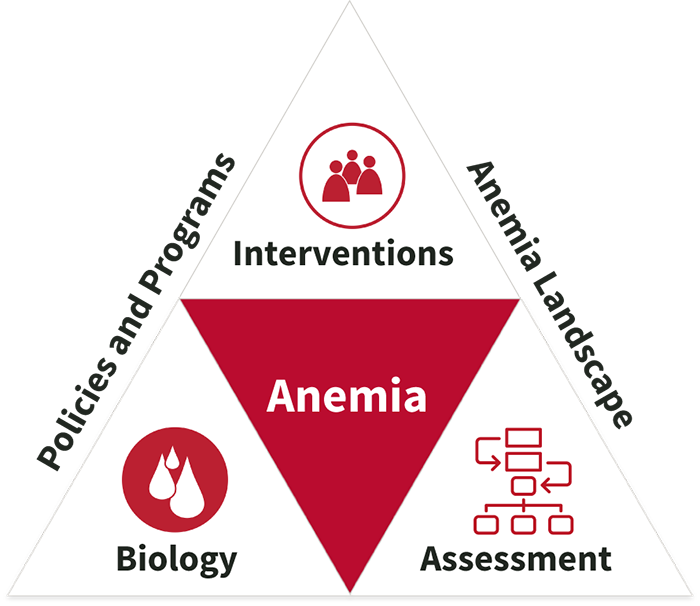The assessment of anemia in a clinical setting begins with careful history taking and a detailed physical examination. The patient’s medical history should include questions about history of anemia symptoms such as fatigue or malaise, bleeding (in particular, gastrointestinal or heavy menstrual bleeding), family history of genetic disorders, current medication use, living in or travel to malaria endemic areas or areas affected by other anemia-causing infectious diseases, and diet history.
Anemia prevalence in a population is determined by the percentage of individual cases below a recommended reference value of the hemoglobin (Hb) concentration. The primary method for assessing anemia is through measuring hemoglobin and comparing the value to set thresholds based on age, sex, and physiological status (pregnancy, lactation, etc.).
Hemoglobin concentration in the blood is measured either by automated hematological analyzers or portable devices that use the principles of spectrophotometry like the HemoCue Hb device (HemoCue®, Angelholm, Sweden).The best practices for anemia assessment include use of venous (or potentially pooled capillary blood) for hemoglobin analysis by an automated analyzer or point-of-care Hemocue® device and adjusting hemoglobin concentration for altitude and smoking status using the age- and sex-specific and physiologically-validated cutoffs recommended by the World Health Organization.
Among other preanalytical factors (temperature and humidity of the environment, posture of the patient, specimen transport and storage, etc.), the mode of blood collection (venous or capillary, single-drop, or pooled capillary blood) affects hemoglobin measurements in different contexts. Discrepancies in the determination of hemoglobin concentrations could have a substantial effect on the estimation of anemia prevalence, especially in population surveys.
We found 43 resource(s)



